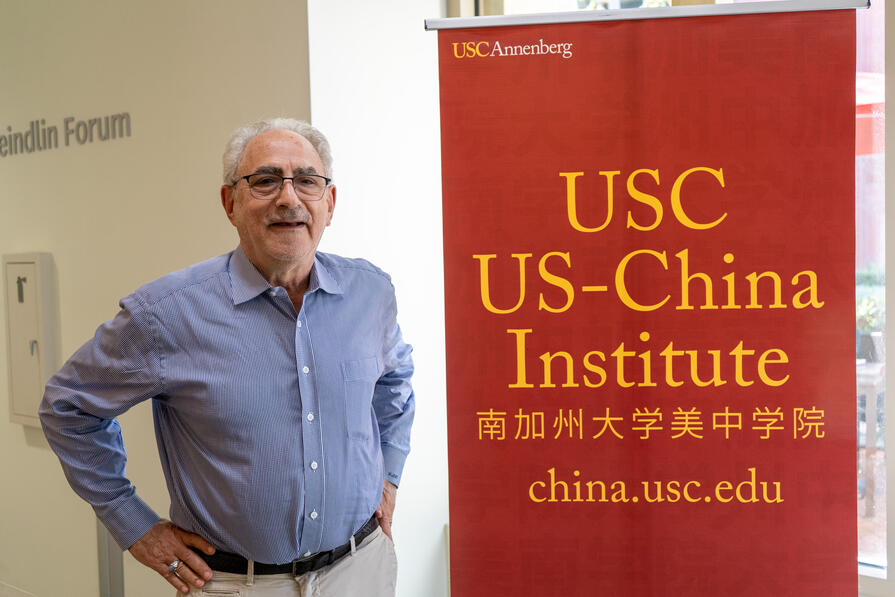Three USC faculty received grants to support China-related research. Grants range in size from $5,000 to $25,000. The next application deadline is January 20, 2009.
Caroline Betts, Economics
Globalization, De-Industrialization, and the Awakening Giant:
Economic Stagnation in Japan and the Emergence of China As the present wave of globalization intensifies, industrialized nations are exposed to new competition in domestic and foreign markets. Mature economies with expensive labor are particularly affected by the emergence of China, with abundant low-cost labor and the fastest growing economy. A dramatic decline in China’s agrarian sector after 1978 was later offset by stunning growth in manufacturing, for which China is now the world leader. By contrast, Japan experienced decades of extraordinary growth, followed in the 1990s by a severe decline in its manufacturing sectors. Subsequently, Japan has undergone de-industrialization, characterized by a shift out of the industrial sector into services.
As the present wave of globalization intensifies, industrialized nations are exposed to new competition in domestic and foreign markets. Mature economies with expensive labor are particularly affected by the emergence of China, with abundant low-cost labor and the fastest growing economy. A dramatic decline in China’s agrarian sector after 1978 was later offset by stunning growth in manufacturing, for which China is now the world leader. By contrast, Japan experienced decades of extraordinary growth, followed in the 1990s by a severe decline in its manufacturing sectors. Subsequently, Japan has undergone de-industrialization, characterized by a shift out of the industrial sector into services.
What has been the role of international trade in the de-industrialization of mature economies, such as Japan, and the industrialization of newly developing economies, such as China? Caroline Betts’ analysis of recent changes in the Sino-Japanese economic relationship will suggest answers to these and other questions and will impact several important areas of theoretical and applied economic study.
Carolyn Cartier, Geography
Art, Power, Land, and Love:
Cultural Politics/Ephemeral Urbanism/South China In Hong Kong, a contemporary arts movement has emerged since the 1997 handover in association with democratic activism for social justice. Contemporary and alternative arts mirror social debates, including the government’s continued redevelopment of beloved sites of experience, relations with Beijing, and challenges to local identity. Alternative art, including installation, video, and performance artwork, stands in contrast to the hot market in Chinese contemporary art, and draws artists into critical dialog about the future of urbanization in the world’s most rapidly developing region.
In Hong Kong, a contemporary arts movement has emerged since the 1997 handover in association with democratic activism for social justice. Contemporary and alternative arts mirror social debates, including the government’s continued redevelopment of beloved sites of experience, relations with Beijing, and challenges to local identity. Alternative art, including installation, video, and performance artwork, stands in contrast to the hot market in Chinese contemporary art, and draws artists into critical dialog about the future of urbanization in the world’s most rapidly developing region.
Art, Power, Land, and Love discovers the contemporary production of art in China’s historic “cultural desert,” the mercantile cities of south China. Off the beaten track, Carolyn Cartier maps the rising interest to make space for art in Hong Kong, Shenzhen, and Guangzhou through ephemeral and noncommercial artworks, alternative art spaces and
industrial studio districts, and the mutual dedication among artists, cultural workers, intellectuals, and activists to challenge the elite value structure of neoliberal globalization that is turning China into a vast region of haves and have-nots.
Sonya Lee, Art History
Surviving Nirvana: Death and Transfiguration of the Buddha in Chinese Art The Buddha is no more. This is the reality that all Buddhist believers have come to live with since the beginning of their faith. Sonya Lee is undertaking a book-length study on the Buddha’s absence and how it was made into a simple yet powerful allegory of survival in premodern China through the nirvana image. As old as Buddhism itself, this image can be found in the many Asian countries where the religion has taken root. Professor Lee’s study focuses on representative specimens found on stone steles, reliquaries, and in cave temples in China from the sixth to
The Buddha is no more. This is the reality that all Buddhist believers have come to live with since the beginning of their faith. Sonya Lee is undertaking a book-length study on the Buddha’s absence and how it was made into a simple yet powerful allegory of survival in premodern China through the nirvana image. As old as Buddhism itself, this image can be found in the many Asian countries where the religion has taken root. Professor Lee’s study focuses on representative specimens found on stone steles, reliquaries, and in cave temples in China from the sixth to
twelfth centuries.
One significant theme to recur throughout Surviving Nirvana will be that the nirvana image repeatedly compelled its makers and viewers to reflect on their own life experience and thereby make their faith relevant. In relating the many stories of overcoming adversity with hope and creativity, Professor Lee’s book will speak to both specialists and a broad reading public.




